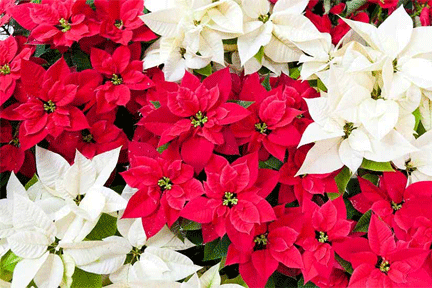Poinsettia, from obscure Mexican weed to the ‘Christmas flower’
News Category: News and General Discussion
-
Published December 28, 2022
There is no plant more closely associated with the holidays than the poinsettia. This ubiquitous plant can be found adorning city halls, restaurants, hotel lobbies, churches, nativity displays, town squares and homes.
Many in the United States think of the poinsettia as a flower, but it is really a shrub indigenous to Mexico. The smaller red leaves at the top of the plant, called bracts, burst into color in December and grow wild in the southern part of the country.
Poinsettias come in leaves of a variety of colors other than the traditional red — pink, red-and-white striped, yellow and white. The plant’s only flowers are the tiny golden blossoms at the center of the bracts.
Like many traditions — and much of the symbolism in Mexico — this plant can be traced back to the Mexica, who called it Cuetlaxochitl — “the mortal flower that perishes and withers like all that is pure.“ The Mexica used the milky, white sap of the Cuetlaxochitl for medicinal purposes — to reduce fevers and for poultices to restore circulation and treat infections.
It was also used for decorative purposes: the Mexica boiled the red leaves — the bracts — to create red and purple dye for textiles and for cosmetic purposes. As a symbol of purity and the sacrifice of warriors, the Cuetlaxochitl was presented in December as a gift to the gods and was displayed in temples.
Montezuma — the last emperor of the Mexica — was so captivated by the plants that he had caravans of Cuetlaxochitl brought from the lower elevations, where they grow, to adorn the palaces in Tenochtitlán in December.
-


Leave a Reply